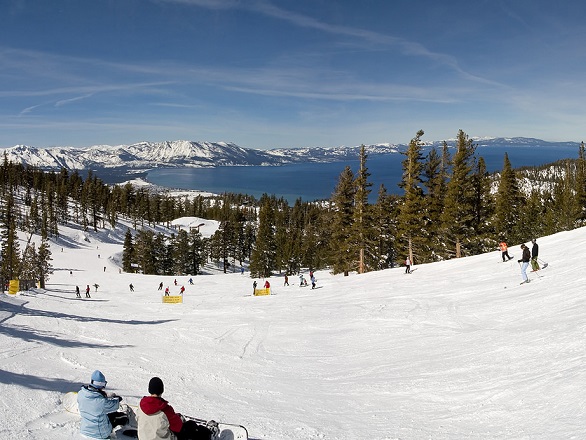About Nevada

The city of Reno is located in a high desert valley at an altitude of 4,498 feet. The Sierra Nevada Mountains, ranging up to 14,500 feet, border the west side of Reno and are the gateway to Lake Tahoe, one of the country's top recreation destination areas. The Reno area has a mild, dry climate boasting more than 300 days of sunshine per year and has four distinct seasons.
The Reno-Sparks area is a safe, small city environment with big city attractions offering many cultural events, museums, shopping malls and 24-hour gaming and entertainment.
Geographically, Nevada is the seventh-largest state in the U.S.: the state totals 110,567 square miles with a population of 3.1 million (according to the 2020 census). The surrounding area offers visitors many year-round opportunities for outdoor adventures, such as hiking, camping, biking, swimming, world-class golfing, horseback riding and world-class skiing.
History
Tribal history extends an estimated 9,000 years in the Lake Tahoe Basin and adjacent east and west slopes and valleys of the Sierra Nevada Mountain Range. The present day Washoe Tribe has deep roots in the past, radiating from Lake Tahoe, a spiritual and cultural center, and encompassing an area that stretches from Honey Lake to Mono Lake. The Paiute tribe resided in the Pyramid Lake basin, whereas Western Shoshone tribes' territories stretched across the modern Nevada, eastern Oregon, western Utah, eastern and southern California, northern Arizona, and southern Idaho.
This aboriginal area was positioned directly in the path of explorers, immigrants, and gold-seekers that were bound for California in the United States' westward migration. Explorer John C. Fremont's 1848 expedition, with legendary scout Kit Carson, established the existence of the Nevada region for the Western World. The first permanent Western settlement was founded in 1851 in Genoa in the Carson Valley and Nevada was admitted to the Union as the 36th state by President Abraham Lincoln on October 31, 1864.
In the 19th century, Nevada had the highest percentage of foreign-born residents of any state in the union, mostly engaged in mining activity. Virginia City's silver mines made Nevada famous in the mid-1800s and as the mines began to dry up the population began to decline. However, at the turn of the century, major silver and gold deposits were discovered in Tonopah and Goldfield, setting off a new boom. At the same time, agriculture began to play an increasingly important role in the state's economy. In 1931, Nevada legalized gambling as a means of raising tax revenues to stabilize the state's economy.
Today, Nevada strives to be a land of opportunity for people of every possible ethnic and cultural group, whether new immigrants to the U.S. or people moving from other parts of the country.
Economy
Nevada is currently one of the fastest growing states in the nation, and the Reno/Sparks/Lake Tahoe area is experiencing strong economic growth. The region's largest industry sectors are:
- Wholesale trade, transportation and utilities - 21.3%
- Leisure and hospitality - 20.6%
- Government - 12.2%
- Professional and business services - 10.6%
- Education and health services - 9.4%
- Aerospace Defense
- Health
- Technology
- Logistics
- Mining>
- Natural Resource Technologies
- Tourism & Gaming
About Northern Nevada
Community Organizations
Community organizations related links